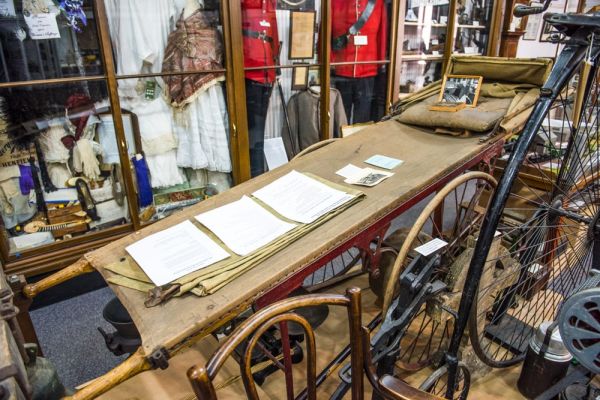
There are exhibits of Victorian costumes, farm tools, and a horse-drawn plough, plus local paintings and photographs, and a "penny farthing" bicycle made by local craftsman Mr WA Powell in 1887.
One object that caught my eye was a display of historic clay pipes from different time periods. The earliest pipe dated to around 1610 and the latest to around 1900. Some are plain, but a few are beautifully carved with intricate foliage designs. None of them come close to the richly decorated late Victorian meerschaum cheroot holder with an amber mouthpiece once owned by the Henfield sexton.
The range of exhibits is striking. There is an Edwardian doll's carriage with an old photo of the original owner, and a wonderful display of painted wooden dolls made around 1850. This type of doll was made of wood and given to sick children in hospital. They were usually burnt after use to avoid spreading contagious diseases.

There is a display of local coinage and a mechanical bell-ringing device. And speaking of bells, you can see a bell used at the Henfield Boys School in 1819.
One odd item is a wagon jack, made by a local blacksmith to allow one end of a heavy wagon to be leveed off the ground so that a wheel could be replaced. On the theme of transport, you can see a scale model of a stage coach that would have been a common sight in Henfield until the coming of the London to Brighton railway line in 1841.
Visiting
The museum is extremely easy to find. It is located directly beside the main town parking area off London Road (the A281). Just follow the signs to the pay and display parking area at the end of Coopers Way and you will see the museum entrance on the south side of the parking area.
The museum is free to enter and, though small, it is full of fascinating artefacts on Henfield's history.







 We've 'tagged' this attraction information to help you find related historic attractions and learn more about major time periods mentioned.
We've 'tagged' this attraction information to help you find related historic attractions and learn more about major time periods mentioned.


